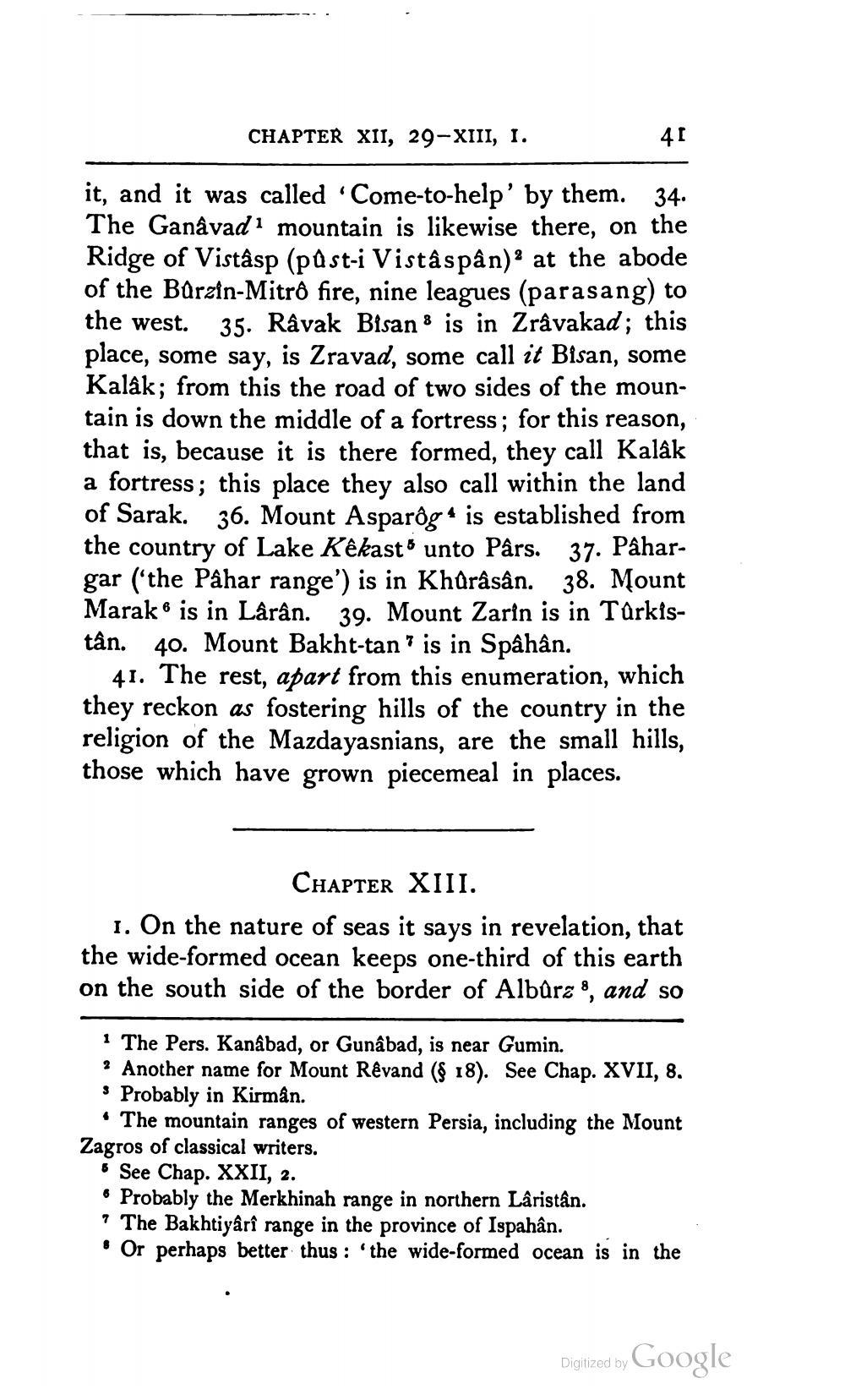________________
CHAPTER XII, 29-XIII, I.
4I
2
it, and it was called 'Come-to-help' by them. 34. The Ganâvad1 mountain is likewise there, on the Ridge of Vistâsp (pûst-i Vistâspân) at the abode of the Burzin-Mitrô fire, nine leagues (parasang) to the west. 35. Râvak Bisan is in Zrâvakad; this place, some say, is Zravad, some call it Bisan, some Kalâk; from this the road of two sides of the mountain is down the middle of a fortress; for this reason, that is, because it is there formed, they call Kalâk a fortress; this place they also call within the land of Sarak. 36. Mount Asparôg is established from the country of Lake Kêkast unto Pârs. 37. Pâhargar ('the Pâhar range') is in Khûrâsân. 38. Mount Marak is in Lârân. 39. Mount Zarin is in Turkistân. 40. Mount Bakht-tan' is in Spâhân.
4
41. The rest, apart from this enumeration, which they reckon as fostering hills of the country in the religion of the Mazdayasnians, are the small hills, those which have grown piecemeal in places.
CHAPTER XIII.
1. On the nature of seas it says in revelation, that the wide-formed ocean keeps one-third of this earth on the south side of the border of Albûrz, and so
1 The Pers. Kanâbad, or Gunâbad, is near Gumin.
2 Another name for Mount Rêvand (§ 18). See Chap. XVII, 8. Probably in Kirmân.
The mountain ranges of western Persia, including the Mount Zagros of classical writers.
See Chap. XXII, 2.
Probably the Merkhinah range in northern Lâristân.
7 The Bakhtiyârî range in the province of Ispahân.
Or perhaps better thus: 'the wide-formed ocean is in the
Digitized by Google




